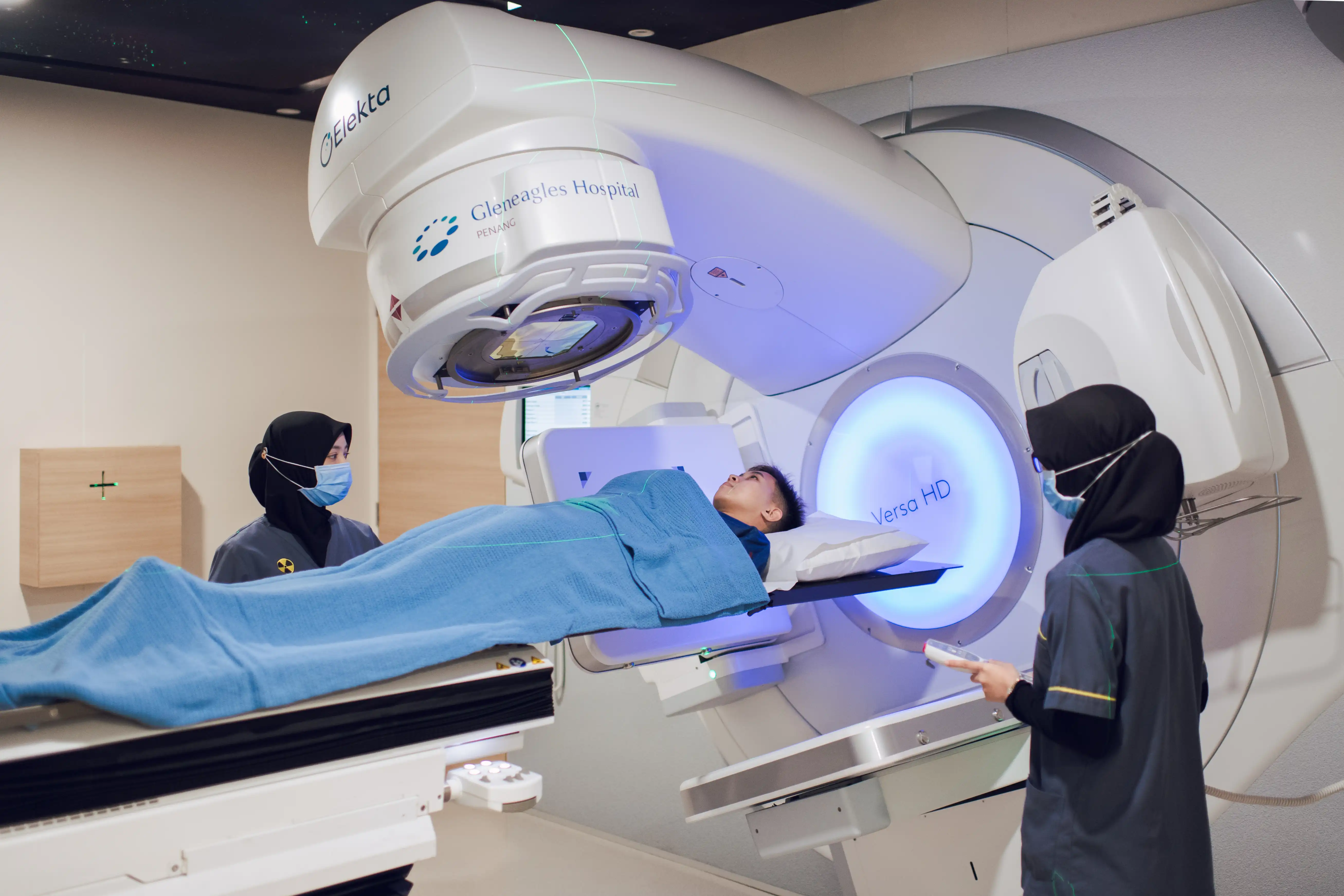The uterus (womb) is a pear-shaped organ located between a woman’s hip bones (pelvis). The uterus is where the foetus develops when a woman is pregnant.
Uterine cancer refers to the cancer that starts in the body of the uterus and not the cervix. Cervical cancer is a different type of cancer. The most common type of uterine cancer is endometrial cancer that originates in the endometrium, which is the inner lining of the uterus.

Risk factors for uterine cancer
The following risk factors may increase your risk of developing uterine cancer:
- Women aged between 40-74 years old
- Obesity
- Taking oestrogen without progesterone for hormone replacement
- Women who have not had children
- Irregular ovulation and often missing periods
- Diabetes
- Polycystic Ovarian Syndrome (PCOS)
- Endometrial hyperplasia (abnormal thickening of the endometrium)
- Family history of endometrial cancer
- Tamoxifen therapy
Symptoms of uterine cancer
The most common symptom of uterine cancer is abnormal bleeding from the vagina, including menstrual bleeding that is heavier than normal; bleeding in between menstrual cycles (when a woman does not have her period); bleeding after menopause; and having vaginal discharge that can range from pink and watery to dark and foul smelling.
Approximately 9 out of 10 uterine cancers are detected due to postmenopausal or abnormal vaginal bleeding. Hence, uterine cancer is frequently diagnosed early.
If you are experiencing abnormal bleeding, particularly if you have gone through menopause, you should consult your doctor immediately. These symptoms may also result from conditions other than cancer. Therefore, consult your doctor for a diagnosis.
Diagnosis of uterine cancer
Your doctor would first question your general health and symptoms before conducting a thorough physical examination. Diagnosis is made based on your reported symptoms, physical examination, and investigations.
- Transvaginal ultrasound to help identify any abnormal masses or changes in the thickness of the uterine lining.
- Endometrial biopsy may be done at your doctor’s clinic. A small sample of the endometrium is extracted and viewed under the microscope.
- Hysteroscopy is a procedure where a thin, lighted tube called the hysteroscope is inserted through the vagina and cervix into the uterus to visually examine the uterine lining and take a sample if necessary.
Treatment options for uterine cancer
The treatment recommended by your doctor will depend on several factors, including the type and stage.
- Surgery
Surgery is the primary treatment option. Total hysterectomy is a surgery of removal of the uterus and cervix. Bilateral salpingo-oophorectomy (BSO) is a surgery of removal of both ovaries and fallopian tubes.
Lymph nodes and other tissue may be excised and examined to ascertain if they have cancer.
Following surgery, or if surgery is not an option, you may undergo chemotherapy, radiotherapy, or a combination of these treatments.
- Radiotherapy
Radiation inhibits the growth of cancer cells by exposing them to high-energy X-rays. There are two types:
- Vaginal brachytherapy (VB) that delivers radiation from a device temporarily inside the vagina to target cancer cells directly.
- External-beam radiation therapy (EBRT) that uses radiation from outside the body. The area to be treated (radiation "field") is planned carefully to limit radiation exposure to healthy tissue.
- Chemotherapy
Chemotherapy is the recommended course of treatment for patients diagnosed with advanced-stage and recurrent endometrial cancer.
Chemotherapy is typically administered via intravenous (IV) injection. It is generally administered in cycles, wherein a phase of treatment is followed by a phase of rest to help the body's recuperation.
Prevention of uterine cancer
Currently, there are no foolproof methods to prevent uterine cancer. However, there are steps you can take to lower your risk of developing the disease:
- Maintain a healthy weight and be physically active
- Hormonal contraceptives
- Pregnancy and breastfeeding
Make an appointment at Gleneagles Hospitals
If you are experiencing any of the symptoms of uterine cancer, get in touch with us to find out more about our Oncology Services at your nearest Gleneagles Hospital.
Gleneagles Hospital works with gynae-oncologists to assist patients through cancer treatment. The caring and multidisciplinary team of healthcare professionals are available for consultation and to provide the best care.












-yeoh-chee-lima51b01d7-09b0-4e11-a0a5-ce3c9ea5de79.jpg?sfvrsn=615d491f_6)

